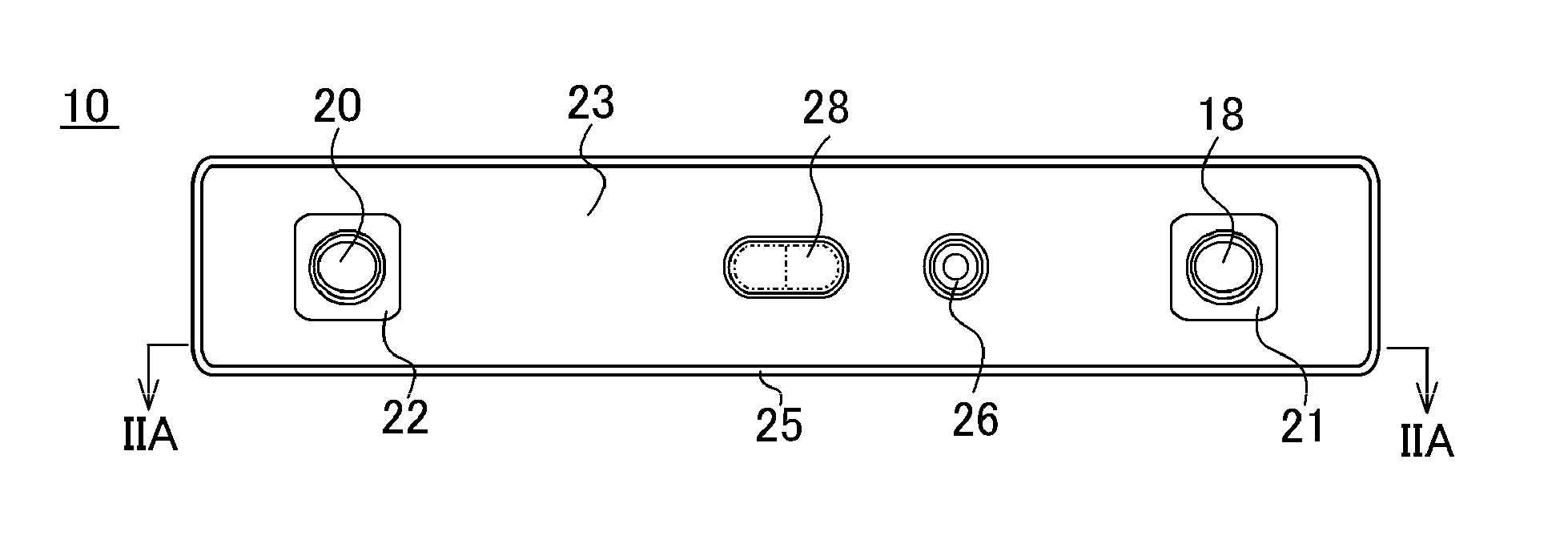Nonaqueous electrolyte secondary battery
a secondary battery and electrolyte technology, applied in the direction of wound/folded electrode electrodes, cell components, sustainable manufacturing/processing, etc., can solve the problems of increasing the amount of increasing the amount of reaction, and increasing the heat generation of the battery, so as to improve the heat release characteristics, improve the efficiency of the battery, and improve the effect of heat releas
- Summary
- Abstract
- Description
- Claims
- Application Information
AI Technical Summary
Benefits of technology
Problems solved by technology
Method used
Image
Examples
embodiment
[0040]First, a prismatic nonaqueous electrolyte secondary battery in accordance with an embodiment will be described with reference to FIGS. 1 to 4. As shown in FIG. 4, this nonaqueous electrolyte secondary battery 10 includes a flattened winding electrode assembly 14. In the electrode assembly 14, a positive electrode 11 and a negative electrode 12 are wound while being insulated from each other with a separator 13 interposed therebetween. The winding electrode assembly 14 has its outermost side covered with the separator 13 and has the negative electrode 12 disposed on a further outer side than the positive electrode 11.
[0041]As shown in FIG. 3A, a positive electrode 11 is produced by the following process: a positive electrode active material mixture is applied onto both sides of a positive electrode substrate of aluminum foil: the resultant object is dried and extended by applying pressure; and the positive electrode 11 is slit so as to expose the aluminum foil in a strip along ...
PUM
| Property | Measurement | Unit |
|---|---|---|
| area | aaaaa | aaaaa |
| area | aaaaa | aaaaa |
| battery capacity | aaaaa | aaaaa |
Abstract
Description
Claims
Application Information
 Login to View More
Login to View More - R&D
- Intellectual Property
- Life Sciences
- Materials
- Tech Scout
- Unparalleled Data Quality
- Higher Quality Content
- 60% Fewer Hallucinations
Browse by: Latest US Patents, China's latest patents, Technical Efficacy Thesaurus, Application Domain, Technology Topic, Popular Technical Reports.
© 2025 PatSnap. All rights reserved.Legal|Privacy policy|Modern Slavery Act Transparency Statement|Sitemap|About US| Contact US: help@patsnap.com



